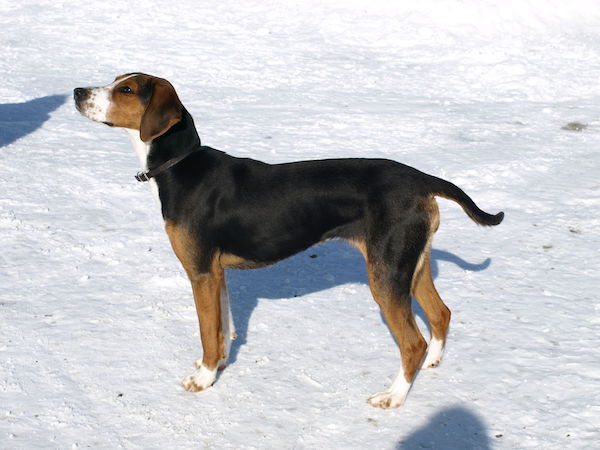
Unlike hunting privileges in many other countries, hunting in Finland (historically speaking) has always been akin to an “Everyman’s Right.” It was never a privilege accorded only to the nobility, even when it came to large game animals.
Within sight of the 20th century, however, Finnish hunters were flummoxed that there was no native hound-type dog that could meet the requirements of hunting in Finnish conditions. Breeds from Sweden, Russia and English weren’t up to the task, and when Finnish hunting enthusiasts got together to discuss the topic, several things happened.
The initiative of these active hunters to serve the needs of hunting began by increasing general awareness of hobby breeders and the benefits of the purebred dogs they bred. A logical next step was to organize dog shows and field trials, create gatherings, and establish a library and pedigree book. Though they may not have realized it at the time, they were laying the ground work for the formation of the Finnish Kennel Club which happened in 1889.
Another objective of these hunting enthusiasts was to develop a hound-type breed for Finnish conditions, a dog that would thrive in Finland’s weather, and be able to work in deep snow on hilly terrain. A focused breeding program commenced that recruited French, German and Swedish hounds, and the result was the Finnish Hound, or Suomenajokoira. The first standard was written in 1932.
Used to hunt hares or foxes, these hounds work independently and track by using earth or airborne scent. Their pursuit of game is resolute, and typically ends with passionate barking when the prey is found. According to the “Best Breeder of Finland,” “The Finnish Hound’s…unfailing eagerness to hunt during several consecutive days up to five to ten hours per day, his audible barking with several tunes, and his ingenious ability to solve the hare’s or foxes complicated misleading trials are the best qualities of a Finnish Hound.”
It’s said that breeders won’t sell puppies as show dogs or pets, and the breed even has it’s own event: the Kilpa championship. The first such event occurred in 1937 and has continued annually except during war years. The three best Finnish Hounds from each kennel districts’ championships are chosen for a group qualification trial. There are four groups, out of which the three best competitors gain entry to Kilpa. The previous year’s overall champion gains entry to Kilpa by default. The winner of the final trial is crowned King of the Hunt, or Ajokuningas.
Though uncommon elsewhere, the Finnish Hound is the most popular hunting breed in Finland and Sweden, in part because long hunting seasons for hares and foxes contribute to the popularity of the breed. During the 1980s and 1990s, more than 5,000 dogs were registered annually, though these days, registrations have leveled off at around 2,000 to 2,300 dogs a year.
Image: Finnish Hound by EtäKärppä – Own work, CC BY-SA 3.0, https://commons.wikimedia.org/w/index.php?curid=7348675
